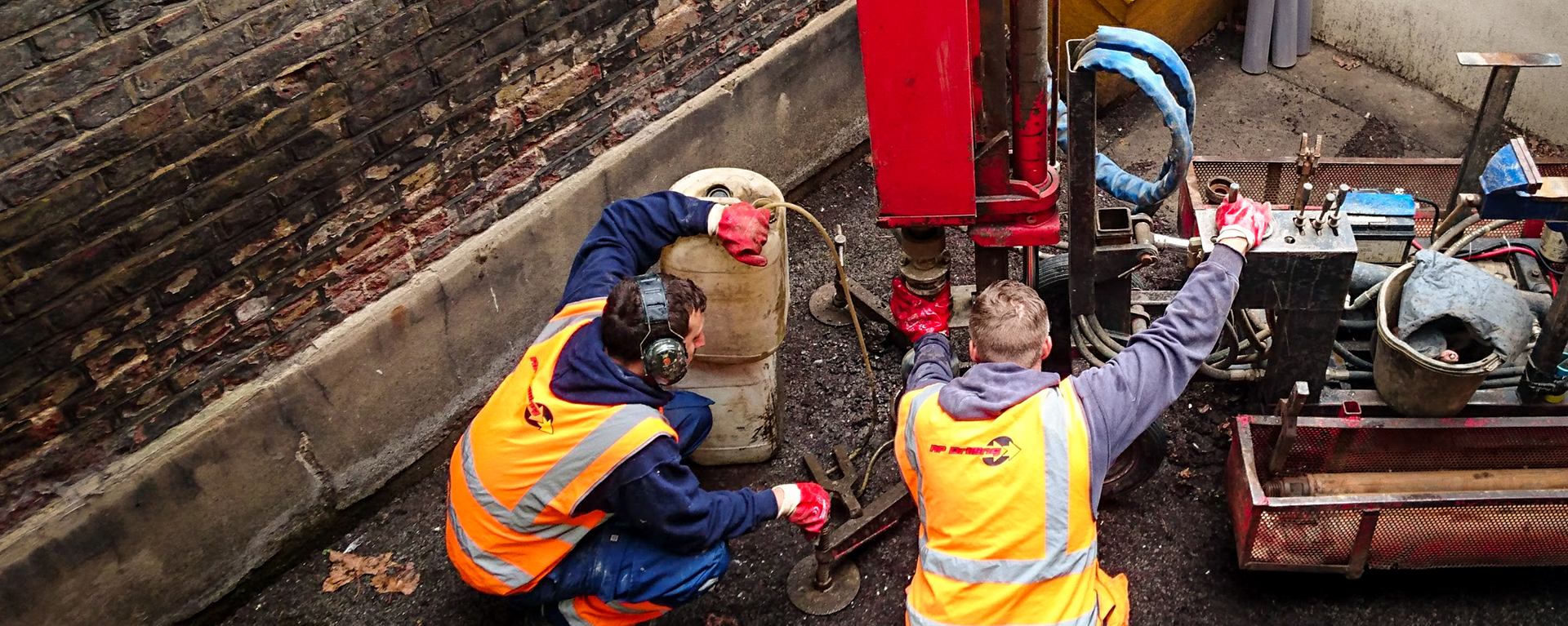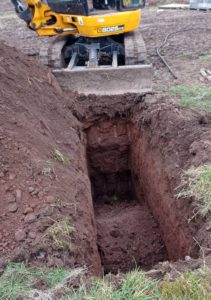
Soilutions will always aim to use the most appropriate site investigation technique(s) to ensure quality data are obtained within agreed timescales and budgets.
We use a variety of methods to obtain subsurface site data with which to produce our Phase 2 Site Investigation reports. Which method can be dependent on a variety of parameters of including:
- Site geology
- Investigation depth
- Requirement for subsequent monitoring infrastructure
- Inclined surfaces
- Access
- Sampling requirements
- Geotechnical requirements
- Need to preserve landscaped areas
- Expected contaminants
- Services
It may be possible to use a single technique or be necessary to combine more than one. Using an excavator to form a trial pit is typically the least expensive and most simple. There are different methods of drilling boreholes in the soil and bedrock – broadly, drilling rigs can be considered “window samplers”, “cable percussion” or “rotary”. Each have advantages and disadvantages and can be utilised in a variety of different configurations depending on needs (such as the need for casing in unconsolidated materials, or different flushing media such as air verses water in the case of rotary drilling).
2021
Phase 2 Site Investigations
Do you want an insight on Phase 2 Site Investigations? This eBook has been written specifically for those new to contaminated land and provides an overview for the uninitiated of what steps you need to follow.


